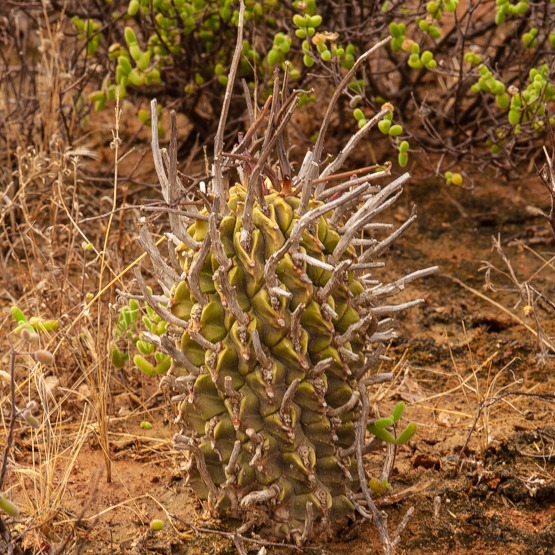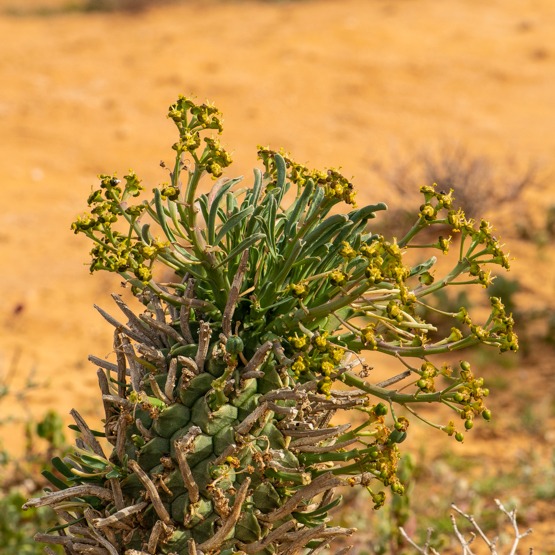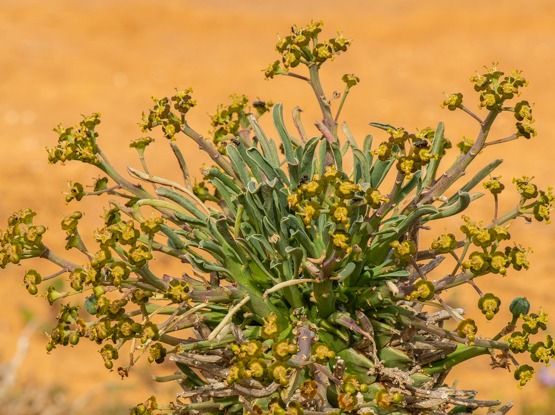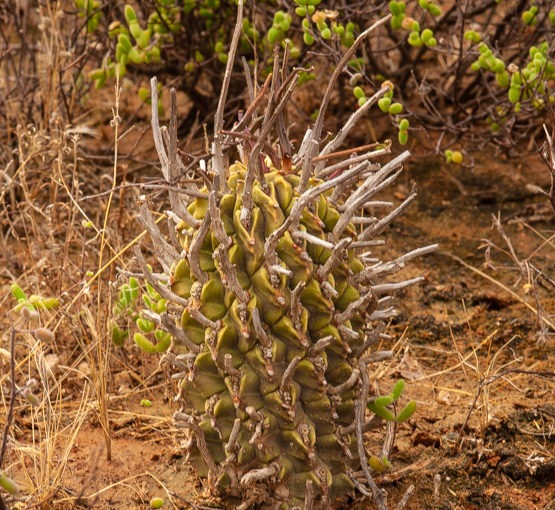At first glance it is often easy to mix up this species with E. schoenlandii (see link Euphorbia schoenlandii).
This applies especially to young plants. In mature specimens the easiest way to tell them apart is by looking at the peduncles (main flower stalks): in E. schoenlandii these become sharp, woody spines, whereas in E. fasciculata this is not the case.
The plants are unbranched, glabrous, up to 30 cm tall with a 3-8 cm thick, cylindrical stem. This stem is covered with spirally arranged, large hexagonal tubercles, each with a characteristic triangular central depression.
The leaves are long and narrow (1-2.5 x 0.2-0.4 cm) and short-lived.
Plants of E. fasciculata are monoecious, which means that the flowers are either male or female, but both occur on the same plant.
The cyathia are gathered around the tip of the stem, several on each peduncle, 0.6-0.7 cm in diameter and with 4-5 green glands. They appear from June to October.
Known from less than 10 localities from the Vanrhynsdorp area southwards to Clanwilliam, the species occurs in loam, sand or quartz gravel on flats or gently sloping hills.




